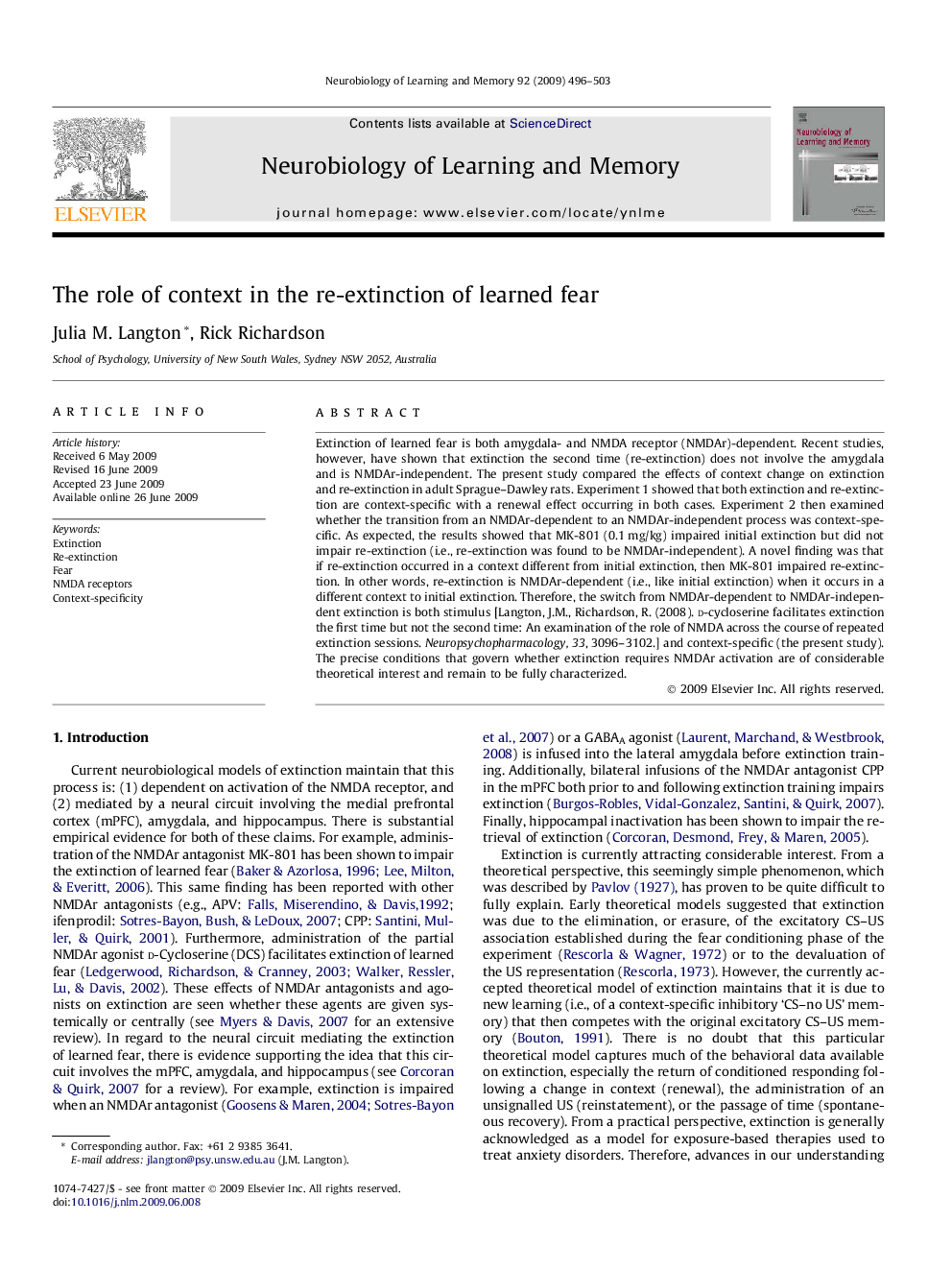| کد مقاله | کد نشریه | سال انتشار | مقاله انگلیسی | نسخه تمام متن |
|---|---|---|---|---|
| 936887 | 1475201 | 2009 | 8 صفحه PDF | دانلود رایگان |

Extinction of learned fear is both amygdala- and NMDA receptor (NMDAr)-dependent. Recent studies, however, have shown that extinction the second time (re-extinction) does not involve the amygdala and is NMDAr-independent. The present study compared the effects of context change on extinction and re-extinction in adult Sprague–Dawley rats. Experiment 1 showed that both extinction and re-extinction are context-specific with a renewal effect occurring in both cases. Experiment 2 then examined whether the transition from an NMDAr-dependent to an NMDAr-independent process was context-specific. As expected, the results showed that MK-801 (0.1 mg/kg) impaired initial extinction but did not impair re-extinction (i.e., re-extinction was found to be NMDAr-independent). A novel finding was that if re-extinction occurred in a context different from initial extinction, then MK-801 impaired re-extinction. In other words, re-extinction is NMDAr-dependent (i.e., like initial extinction) when it occurs in a different context to initial extinction. Therefore, the switch from NMDAr-dependent to NMDAr-independent extinction is both stimulus [Langton, J.M., Richardson, R. (2008). d-cycloserine facilitates extinction the first time but not the second time: An examination of the role of NMDA across the course of repeated extinction sessions. Neuropsychopharmacology, 33, 3096–3102.] and context-specific (the present study). The precise conditions that govern whether extinction requires NMDAr activation are of considerable theoretical interest and remain to be fully characterized.
Journal: Neurobiology of Learning and Memory - Volume 92, Issue 4, November 2009, Pages 496–503